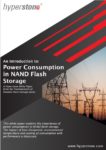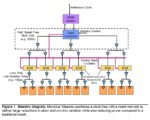I first met Jimmy Chen from Easy-Logic at #60DAC and wrote about their Engineering Change Order (ECO) tool in August 2023. Recently we had a Zoom call so that I could see a live demo of their EDA tool in action. Allen Guo, the AE Manager for Easy-Logic gave me an overview presentation of the company and some history to provide a bit of context.… Read More
Tag: low power
Complete 1.6T Ethernet IP Solution to Drive AI and Hyperscale Data Center Chips
The demand for high-bandwidth, low-latency networking solutions has never been greater. As artificial intelligence (AI) workloads continue to grow exponentially, and hyperscale data centers become the backbone of our digital infrastructure, the need for faster and more efficient communication technologies becomes imperative.… Read More
100G/200G Electro-Optical Interfaces: The Future for Low Power, Low Latency Data Centers
Electrical copper interconnects, once the backbone of data center networks, are facing growing challenges. Rapid expansion of AI and ML applications is driving a significant increase in cluster sizes within data centers, resulting in substantial demands for faster I/O capabilities. While the surge in I/O requirements is … Read More
Slashing Power in Wearables. The Next Step
In wearables and hearables, low power is king. Earbuds for example still only manage a half-day active use before we need to recharge. Half a day falls short of truly convenient for most of us – a full day would be much better, allowing for overnight recharge. Physics limits battery sizes so system designers must look to SoC architectures… Read More
The Importance of Low Power for NAND Flash Storage
Even though we all know that reducing power consumption in NAND Flash Storage is a good idea, it is worthwhile to take a deeper dive into the underlying reasons for this. A white paper by Hyperstone, a leading developer of Flash controllers, discusses these topics providing useful insight into the problem and its solutions. The … Read More
It’s Now Time for Smart Clock Networks
By now most SoC designers are pretty familiar and comfortable with the use of Network on Chip (NOC) IP for interconnecting functional blocks. Looking at the underlying change that NOCs represent, we see the use of IP to supplant the use of tools for implementing a critical part of the design. The idea that ‘smart’ things are better… Read More
Low Energy SoCs with Near Threshold Voltage
There is an important difference between low power and low energy in SOC design. Low power focuses on instantaneous power consumption. This is frequently done to deal with cooling and heat dissipation issues. Of course, it serves as a prerequisite for low energy design, which seeks to reduce overall power consumption over time.… Read More
Hearables: From Earbuds to Life Augmentation and Beyond
As the months of 2020 passed by, I started noticing more and more people sporting what looked like fashionable ear accessories. I’m of course referring to True Wireless Stereo (TWS) earbuds. With the rapid increase in online meetings due to social distancing requirements, it appeared that adoption of TWS earbuds was even faster… Read More
Probing UPF Dynamic Objects
UPF was created to go beyond what HDL can do for managing on-chip power. HDLs are agnostic when it comes to dealing with supply & ground connections, power domains, level shifters, retention and other power management related elements of SoCs. UPF fills the breach allowing designers to specify in detail what parts of the design… Read More
CDC, Low Power Verification. Mentor and Cypress Perspective
Clock domain crossing (CDC) analysis is unavoidable in any modern SoC design and is challenging enough to verify in its own right. CDC plus low power management adds more excitement to your verification task. I wrote on this topic for another solution provider last year. This time I want to intro an interesting twist on the problem,… Read More











